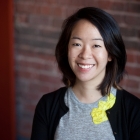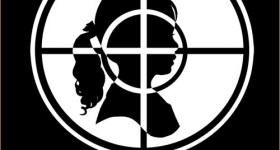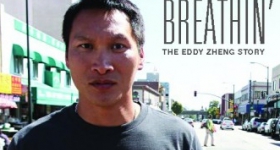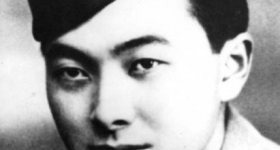Illustrator Ronald Kurniawan
Every morning, Susan Lee* rises around seven in the morning from the bed she rents for $200 a month in a Lower Manhattan share and gets ready to go to work. Her thick, straight shoulder-length brown hair is accented with orange streaks that conceal her 47 years and hint at her profession, cutting hair in a Chinatown salon. On this winter day, she draws navy eyeliner on her lower lids, piles on four layers of sweaters and a black leather jacket, and wends through the cramped Chinatown streets bustling with produce sellers and shoppers. Lee blends into the milling crowds, just another employee on her way to work.
Chinatowns are the best places to live if you have a secret, and New York is no exception. While Asian American activists may object to Chinatown’s reputation as an inscrutable underworld, the neighborhood continues to exist beyond the reach of the law. It’s not that the people there don’t understand American laws; they just aren’t afraid of them.
It’s a place where people keep their heads down and their mouths shut, where parents tell their children that the nail that sticks out gets hammered down, and residents say that even if someone was shot in the middle of a crowded street, the cops would never know who did it. Blending in is a survival tactic that capitalizes on the inability of non-Asians to distinguish one Asian face from another.
Lee would know. She has a secret. In fact, she has a couple. She is an undocumented immigrant, and she is HIV positive. Like many of the 7 million other undocumented immigrants in the US, she faces the challenge of holding down a job and a place to live while sending money to her family back home and staying off the police radar. She must also get her medical treatment without drawing attention from her community, where AIDS is strongly associated with “immoral” acts like sexual promiscuity, prostitution, intravenous drug use and homosexuality.
Stigma is common in all racial and ethnic minority communities, and Asian and Pacific Islanders with AIDS are particularly vulnerable. Fear of being discriminated against is the main reason why APIs get tested at only half the rate of most other ethnic groups—44 percent are diagnosed only when seeking treatment for what they later find out to be an AIDS-related illness. This same fear also prevents APIs from sticking with their treatment regimen and from disclosing their AIDS status to peers, employers and family. Secrecy becomes essential, and isolation and self-blame only deepen.
Asian immigrants living with AIDS are marginalized partly because its members choose to remain silent for cultural reasons, but also because there just aren’t many of them. According to the Department of Health, 1,067 APIs had AIDS in New York City at the end of 2004, comprising a mere 1.1 percent of infected people citywide. APIs have consistently represented approximately 1 percent of AIDS cases nationwide. At the end of 2004, the Center for Disease Control and Prevention counted 4,045 APIs living with HIV or AIDS in the US. But it’s likely that these figures don’t account for the portion of the half-million undocumented Asian immigrants that may also be infected with this virus. “You can’t play the numbers game with this community,” says Dr. Ezer Kang, a clinical psychologist at Columbia Presbyterian Medical Center.
When AIDS arrived in America in 1981, its face was upper-middle class, gay, white and male. Today, almost one in four Amer-icans living with AIDS contracted the disease through heterosex-ual contact, and 65 percent of Americans living with AIDS are of Asian, African American, Native American or Hispanic descent. Across the globe, the disease spreads fastest among vulnerable populations including young women in Sub-Saharan Africa, monogamous wives in India and rural farmers in southern China.
All signs point to Asia as the epidemic’s next frontier. Some experts predict that in 2010, Asia will have more AIDS-infected people than the 25 million in sub-Saharan Africa today. With new AIDS infections on the rise in the two most populous countries in the world and the steady influx of immigrants from Asia—a quarter of the total arrivals in New York City since the early 1990s—it’s clear that the outbreak of rampant AIDS among the Asian immigrant community in America is a ticking time bomb.
But minority AIDS activists are still struggling to emerge from beneath the disease’s lingering reputation as one that affects predominantly white gay men. Last February, a promiscuous gay man in New York City was found to have a particularly drug-resis-tant strain of HIV that escalated to a rapid onset of AIDS, reviving the stereotype. Confronted with this “supervirus,” city and state health authorities promised more outreach to methamphetamine users and young gay men. Among this media frenzy, there was no mention of additional outreach to immigrants, the poor, people of color or women—communities where the disease has exploded in recent years and the need for education and care services is the most urgent.
The situation is all the more difficult for people who aren’t even allowed to be here. Federal law stipulates that undocument-ed immigrants who are HIV positive cannot obtain an immigrant visa, Medicare or non-emergency hospitalization. In the late 1980s, a little-known provision of federal law enabled local immigration authorities to grant temporary legal status for up to several years to those undocumented residents facing extreme hardship. Those with AIDS were eligible for Medicaid, disability benefits, and state-funded housing vouchers. But the passage of the draconian Illegal Immigration Reform and Immigrant Responsibility Act of 1996 put a stop to Medicaid benefits for undocumented residents and limited those who earned special status to only 120 days in the US.
“Silence equals death” was the powerful rallying cry used by activists to illustrate the Reagan administration’s refusal to acknowledge AIDS in the 1980s. It’s a phrase that has also been leveled at President Bush over his strategy of HIV prevention through abstinence education programs instead of condom distribution, comprehensive sex education or needle exchange programs. These words still remain true today for undocumented Asian immigrants struggling with this irreversible disease.
The Quest to Be a Good Mother
Born and raised in Malaysia, Lee dropped out of school in sixth grade to work as a hairdresser. She had her first son at age 35 and another one two years later. Her husband was an unemployed gambler who neglected his family, and she divorced him when the youngest son was only a few months old. She dreamed of moving to New York to join her two younger sisters, both of whom had immigrated in the late 1980s on tourist visas and eventually obtained green cards. She made very little money in Malaysia and hoped to earn a fortune in the US, or at least enough to send home to her two sons. She applied for a visa twice, failing both times. Then, she heard whispers of another way to get into the country.
In 1999, she paid $2,000 to a travel agency specializing in the illegal migration of Malaysians to the US, said goodbye to her young sons and got on a plane. Her journey, entirely arranged by the agency, included a one-day stop in Korea, a lone flight to Toronto where she pretended to be visiting relatives and a boat trip from Canada that smuggled her and five Chinese migrants into the US.
She stayed with her sisters for the first three years, but eventually moved out as their families grew. Every month Lee sends $400—half her monthly salary—to her mother, now the boys’ guardian, to pay for their school fees and living expenses. “That’s a lot in Malaysia,” she says proudly.
In January 2004, Lee was besieged by a harsh cough that lingered for two weeks. Her relatives took her to the hospital, where she stayed for two weeks while doctors ran tests and studied X-rays of her lungs. She wasn’t getting better, and her doctors asked her to consider an HIV test. She had heard of AIDS, but didn’t know what it was or how it was spread, until she was diagnosed with HIV a few days later.
Chinese New Year is supposed to be the happiest season of the year, a time to celebrate a fresh start with the family. Instead, Lee was alone with her secret. She was shocked and scared, but there was no question in her mind that if others knew, she would be ostracized. She has not told her sisters about her disease, nor her mother, who is old and easily shocked. She has kept the secret from her coworkers as well, because of what she fears to be all-too-certain consequences. She may tell her sons about being HIV-positive when they’re older; she worries they will be afraid of her if they know now.
“The Asian community has contempt for those with AIDS,” she says. There is something enigmatic about her, as she picks at a custard tart with her fingers and looks away often. “People wouldn’t want to be friends with me anymore. They would spread the word around, and I’d lose my job and not be able to find another. Most people wouldn’t understand and would only make my life more difficult.” She says she doesn’t know how she contracted AIDS.
No matter how difficult her situation is in New York, Lee knows it’s better than what life would be in Malaysia. Health care for people with AIDS remains a challenge back home, where most cases are among young male intravenous drug users. “The doctors wouldn’t know what to do,” she says. “If you have no money, they won’t help you at all. If you have HIV, you wait for death to come.”
Getting Help
“Eat Fuk” greets me on the doorway of the Chinese-American Planning Council’s AIDS program office in Chinatown. This mis-spelled and ungrammatical obscenity leads into your standard low-budget nonprofit office. Sterile white walls are aggravated by fluorescent lighting. The office is pin-drop quiet, and although there are 10 cubicles, I never see more than five employees on any visit. Employees sit on metal folding chairs and peer into old computers. Handmade posters and signs are displayed every-where. Information pamphlets are simply designed and easy to photocopy. One afternoon a worker from the energy company pays a visit, inquiring about an overdue bill totaling $160. The program’s energetic executive director manages to charm from him a few extra days to pay the bill.
The Chinese-American Planning Council (CPC) is a 40-year-old social services organization aimed at low-income and non-English speaking Chinese residents in New York City. Its AIDS program was started more than 10 years ago with a grant from the Federation of Protestant Welfare Agencies, and today it’s one of only two New York City organizations that cater specifically to Asians living with AIDS. Its programs include a bilingual hotline and monthly support groups, but its most popular ones are case management and translation services for clients seeking HIV test-ing. They have 56 clients, many of whom ask for housing and im-migration help in addition to health services.
The Council has been Lee’s guardian angel. After her first hospital stay, a CPC representative came to visit her and helped arrange for the state to pay her medical expenses, which totaled around $20,000 for two weeks. The Council then helped her get an AIDS Drug Assistance Program card that gives her access to free medicine that would otherwise be prohibitively expensive. Lee now knows a lot about AIDS, thanks to the Council’s seminars on health, nutrition and sex. The Council also throws holiday parties, where she has made many friends.
One of the friends she made was another undocumented immigrant named James Fong, a Chinatown cook who was di-agnosed in Malaysia and now remembers to take his medicine by color. He’s been taking the “browns” for two years, and the “whites” help battle anemia, for which he was hospitalized last year. He has sex with women in New York, but he always uses a condom and doesn’t think it’s necessary to tell them about his HIV status. None of his friends or co-workers know his secret, and he feels no need to tell them, either. “If they knew, it’d be a hassle, a headache,” he says. “In Chinatown, we don’t talk about HIV.”
Regrets About The Past
Lee’s outlook has changed since her diagnosis, although her daily routine has not. She still works 11 hours, seven days a week at the hair salon. When she’s not working, she cleans, cooks and stays at home. Sometimes she goes for dim sum with her sisters. She takes extra care of herself, doing a little bit of exercise when work is slow and disinfecting bloody cuts right away. But she has faced no major health problems since her diagnosis, and her doctor says that if she takes her medication, she will stay healthy for years. “What’s happened’s happened,” she tells me, “and there’s nothing you can do about it. There’s no point in thinking about the future.”
Because doctors have told her that people diagnosed with HIV live an average of 10 years, she believes she has nine years left. She is mentally prepared to work for $3 an hour for the rest of her life and to eventually die alone. “The saddest thing is not knowing if I will ever see my sons again,” she says, looking away into the distance.
*Name has been changed.
The Numbers
At the end of 2004, 77 percent of APIs living with AIDS were men, 22 percent were women and 1 percent were children.
Most HIV/AIDS cases among APIs are concentrated in the East and West Coasts, Chicago, Hawaii and Guam. Only California, Hawaii, New Mexico, and the Pacific Islands report AIDS cases among APIs by ethnicity/national origin.
API men who have sex with men comprise 72 percent of the community’s male AIDS cases, compared to 56 percent of Native Americans, 52 percent of Hispanics, 44 percent of Blacks and 75 percent of Caucasians.
API women are least likely to report what put them at risk for HIV/AIDS. Among cumulative AIDS cases reported by API women, “risk factor not reported or identified” accounted for 24 percent of the cases, compared to 20 percent for Black, 13 percent for Native American/Alaska Native, 12 percent for Hispanic, and 12 percent for Caucasian women.
Of those diagnosed with AIDS between 1996 and 2004, 81 percent of APIs were alive nine years after diagnosis, compared to 74 percent of Caucasians, 72 percent of Hispanics, 65 percent of Native Americans, and 64 percent of African Americans.
Data from a 2003 HIV testing survey in Seattle indicated that 90 percent of the APIs surveyed perceived themselves at some risk for HIV infection, yet only 47 percent had been tested
during the past year.
From 2001 to 2004, APIs had the highest annual increase of HIV/AIDS diagnoses. APIs were diagnosed at an average annual increased rate of 9 percent, while the overall rate of diagnoses among all ethnic groups did not change.
APIs have high rates of many preventable diseases like tuberculosis and hepatitis B that are strongly associated with HIV. In fact, APIs with AIDS have the highest rate of Pneumocystis pneumonia among all ethnic groups.
API HIV/AIDS Organizations
California
Asian & Pacific Islander
Wellness Center
(San Francisco, San Mateo
County, East Bay)
Filipino Task Force
on AIDS (San Francisco)
Asian Americans for
Community Involvement
(Santa Clara County)
Asian Pacific AIDS Intervention
Team (Southern California)
Asian Youth Center (Los Angeles
and San Gabriel Valley)
Guam Communications
Network (Long Beach)
Asian Pacific Health Care
Venture, Inc. (Los Angeles)
UCSF Center for AIDS Prevention Studies (San Francisco)
Hawaii
Life Foundation (Honolulu)
Illinois
Asian Health Coalition
of Illinois (Chicago)
Massachusetts
Massachusetts Asian AIDS
Prevention Project (Boston)
New York
Asian & Pacific Islander
Coalition on HIV/AIDS (New York)
Chinese-American
Planning Council, Inc.
Pennsylvania
AIDS Services in Asian
Communities (Philadelphia)
National
Asian and Pacific Islander
American Health Forum
Lisa Wong Macabasco is a San Francisco-based freelance writer.










Comments